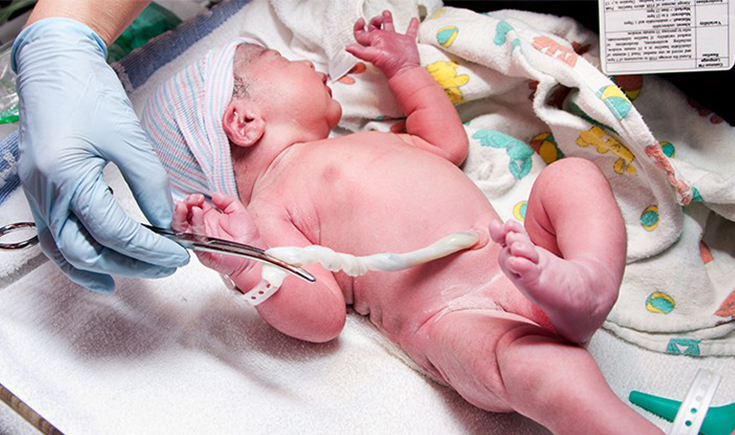

The process of collecting and storing your baby’s stem cells is growing in popularity. I made the same decision during my third pregnancy to store my daughter’s cord blood, having not been as aware of the benefits of doing so during my previous two.
Pregnancy and birth is an already daunting time, and as with any unfamiliar medical procedure, considering cord blood storage can cause further confusion as a result of the unknowns.
To help make things clearer, we asked the Medical Director of Cell Care, Associate Professor Mark Kirkland, to answer some of the most common questions asked about cord blood storage.
What is cord blood and cord tissue storage?
Cord blood banking is the process of saving the blood left over in your newborn baby’s placenta. Cord blood is rich in stem cells – which are the building blocks of all cells in the body. Cord blood stem cells can be used to treat medical conditions such as leukaemia and immune disorders for your child and compatible siblings or family members. You only have one opportunity to collect and store your baby’s cord blood – at birth.
Cord tissue banking is the most recent advancement in stem cell storage. Cord tissue banking is the process of storing a small piece of the umbilical cord itself.
What does the process involve?
It’s easy to arrange your cord blood and tissue collection. Once signed up you will be sent a collection kit that you take to the hospital. At the time of birth, your Cell Care Collector or Obstetrician will collect the cord blood and tissue. The collection process takes about 5 minutes and is painless to mother and baby.
What happens to the blood once removed?
Once collected, the blood and tissue is then couriered to a specialised laboratory and storage facility. At the laboratory, the plasma is removed and the remaining cells, including stem cells, are cryogenically stored at -196 C.
How long does it last?
Tests have shown that cells remain viable through this process, and the evidence suggests they can be stored indefinitely and thawed back into healthy potent cells when needed. Most people choose to store over 18 or 25 years.
What costs are involved?
The cost is more affordable than people think. You can store your baby’s stem cells for up to 25 years.
Prices start from $143/month, paid over 24 months. Prices vary depending on whether you choose to store cord blood and or tissue or pay upfront or spread the payments over many years. It’s really easy for people choose an option that suits them. For the cost of a gym membership or health insurance, storing your baby’s stem cells provides peace of mind at a reasonable price.
What are the benefits of storing cord blood and tissue?
Cord blood is currently used in place of bone marrow transplants to treat blood cancers such as leukaemia and immune disorders.
The benefits of storing cord blood are many:
- Collection is simple and painless for both mother and baby
- Once stored it is available immediately for treatment
- There is no need to locate a compatible donor
- No invasive procedures (harvesting bone marrow from a sibling is invasive)
- Your baby’s umbilical cord stem cells are a perfect match for your child, and are more likely to be a match for siblings and family members than an unrelated donor
What could it possibly be used for?
Worldwide, cord blood has been used in over 30,000 transplants in the treatment of over 80 conditions. In Australia, over 500 cord blood units have been released to treat many conditions here and abroad.
Diseases that have been treated by cord blood infusion include cancers such as acute and chronic leukaemia, solid tumours and lymphomas, blood disorders such as anaemias and thalassemia, immune disorders and metabolic disorders.
Are new findings continuing to be discovered?
Research is underway in Australia and around the world that could see cord blood used in many conditions including Cerebral Palsy, Type 1 Diabetes and Autism.
In May of this year, as part of a clinical trial at Westmead hospital in NSW, a 4 year old West Australian girl was the first in the world to have her cord blood infused to prevent or delay the onset of type 1 diabetes. Her parents stored her cord blood at birth with Cell Care.
Cord tissue contains Mesenchymal stem cells (MSCs) which are different to the stem cells found in cord blood. MSCs form bone, muscle, cartilage and nerve cells and many clinical trials are underway investigating the power of these cells. Cord tissue is not currently approved for any therapies in Australia however,future research is exciting!
Do your homework
All expectant mothers should do their research and investigate cord blood stem cell storage. You only have one opportunity to collect and store your baby’s stem cells – at birth.























